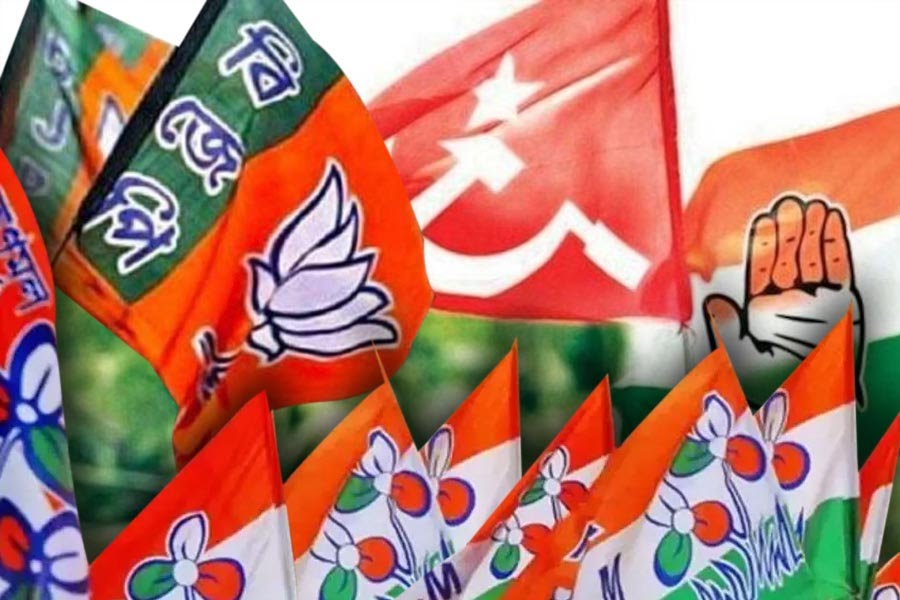News Desk, Kolkata : In the last parliamentary elections, Trinamool secured a stronghold in the rural areas of Nabadwip constituency, yet paradoxically, they faced a growing opposition in the local panchayat elections. Since the beginning of the year, Trinamool has been actively strengthening its grassroots by establishing robust organizational structures at the booth level. They are reaching out to every household, building strong connections, and actively forming committees through meticulous selection during this process of outreach. Even new booth committees are being formed.
Despite a significant shortfall of votes, exceeding 12,000, in the Nabadwip Pur area during the last parliamentary elections, the entire focus has shifted towards the panchayats, where Trinamool has managed to outpace BJP with more than 4,000 votes. The significance lies in the panchayats that played a crucial role in the recent electoral landscape. Though the panchayats were not entirely conquered, the opposition’s power has undeniably surged in rural Nabadwip during the last election. BJP, in particular, has doubled its seats, securing a notable presence in eight panchayats out of thirteen.
Nabadwip emerged as the second seat in the previous parliamentary elections, captured by BJP. However, in the 2021 state assembly elections, Trinamool reclaimed Nabadwip by garnering over 15,000 votes more than BJP, marking their fifth consecutive victory in the constituency. Despite facing some setbacks in the rural areas over the last two years, Trinamool has managed to reclaim lost ground. In the 2018 panchayat elections, Trinamool had seats in eight panchayats out of thirteen in Nabadwip. This time, they have increased their tally to 26 seats.
Especially noteworthy is the shift in Swarupganj Panchayat, which slipped from Trinamool’s grip after a long period of dominance. The municipality of Mayapur, similar to the pattern observed in other areas, witnessed a shift in favor of CPI(M). The party successfully secured only two out of the 41 seats in two panchayats out of a total of 41 seats in the region. Although this election outcome has raised internal concerns within Trinamool, Kallol Kar, the President of Nabadwip Block, dismisses any alarm. He insists, “In the vast spectrum of politics, minor fluctuations are inevitable. But during elections, we are all united. In reality, people have stepped into BJP’s deceptive trap. However, Trinamool will lead in rural Nabadwip with even more votes than the last time.”
Regarding the rise in opposition strength, Kar states, “In the name of Ram and in the guise of brothers, they have gained votes, creating a significant impact on the overall results.” However, Gautam Pal, a member of BJP’s state committee, argues, “Panchayat elections are not equivalent to parliamentary elections. At least 50% of the votes in the state assembly will be ours, considering the malpractices of TMC. Why would people vote for a party known for corruption like Trinamool?”
The Turning Tide:
This electoral shift presents a paradox, a battleground where the left builds temples, and the right engages in malpractices. While left-leaning parties are gaining momentum, allegations of corruption have clouded Trinamool’s stronghold in Mayapur and Bamunpukur No. 1. This scenario poses a challenge for Trinamool as they grapple with internal strife to decipher the reasons behind this electoral trend. Nabadwip Block President, Kallol Kar, reflects on the situation, “One party is constructing temples, and another is indulging in corruption. The left has proven its strength against corruption.” However, Sudip Debnath, the Swarupganj branch manager for CPI(M), highlights, “The recent brigade has demonstrated how powerful the left can be against corruption.”
This narrative is not merely a tale of ballots but a saga of ideologies clashing at the grassroots. The political dynamics within Trinamool’s internal structure are put under scrutiny as they navigate the fallout of the panchayat results. The battle for supremacy in Nabadwip extends beyond electoral numbers; it’s a struggle for the soul of the constituency. The significance of this local turmoil reverberates through the entire political landscape of West Bengal, shaping the narrative for the upcoming state assembly elections. As the panchayat results become the talking point in every corner, the resilience of political entities faces a litmus test, and the future of Nabadwip hangs in the balance.
DISCLAIMER
Our news media denounces any form of bias and disapproves of sensationalism. The disseminated news is entirely educational and aimed at social awareness. Our media maintains absolute impartiality, adhering solely to the purpose of education and social consciousness.


